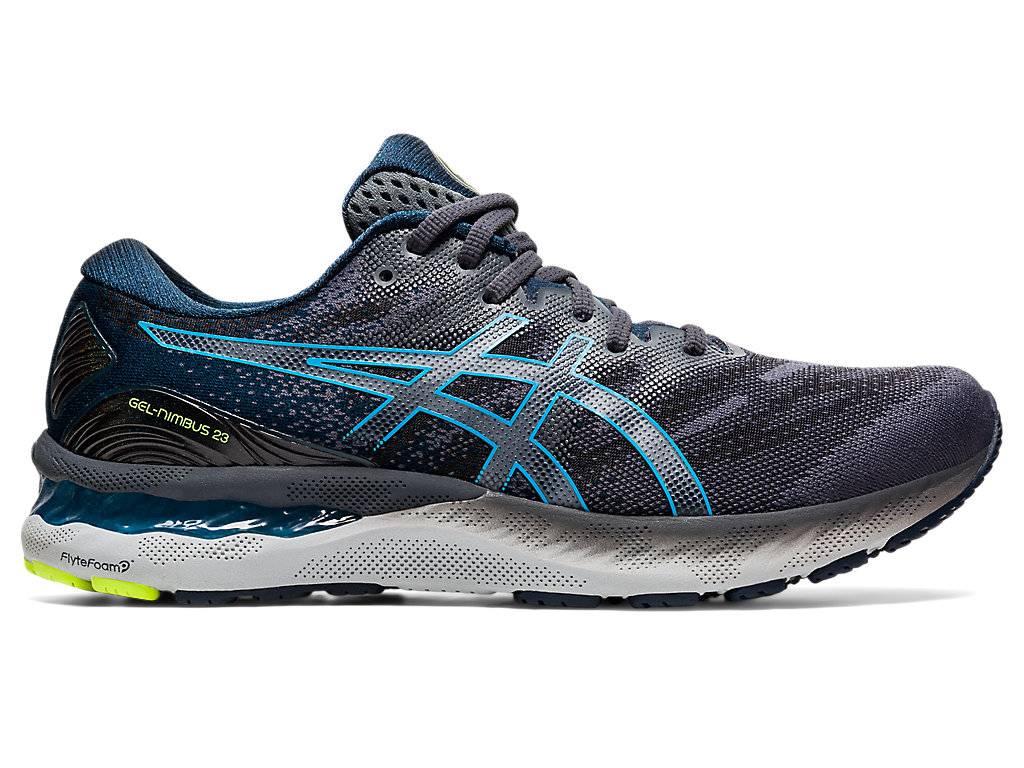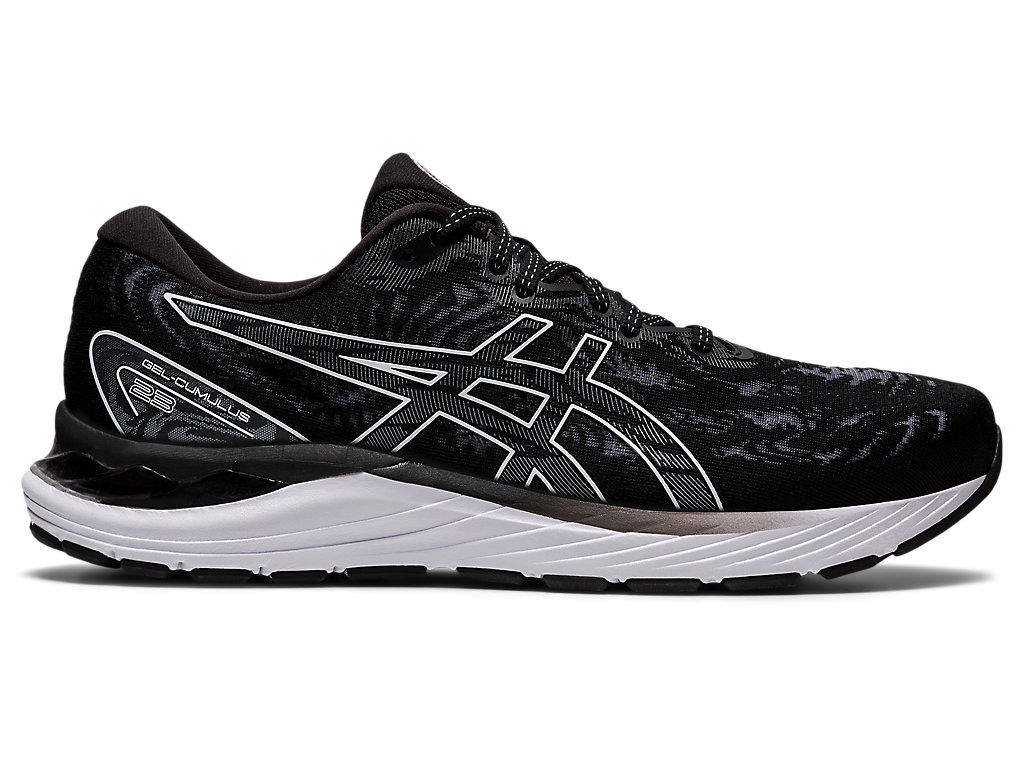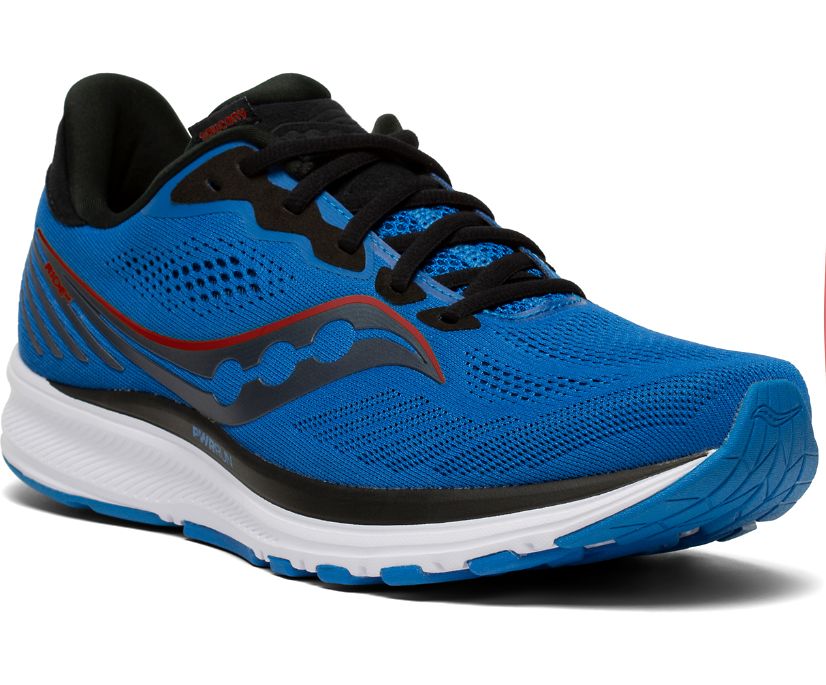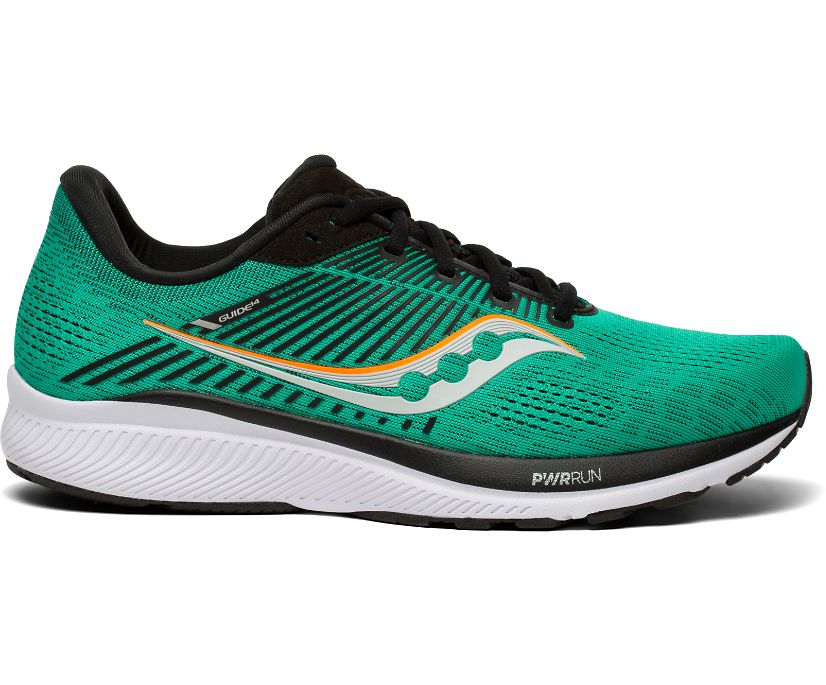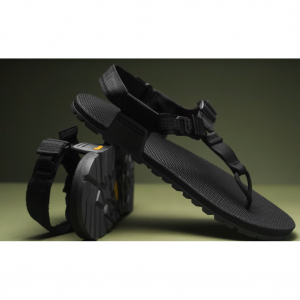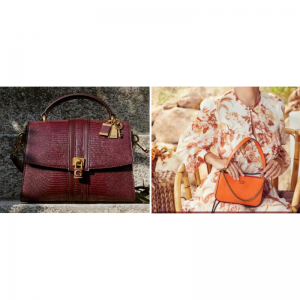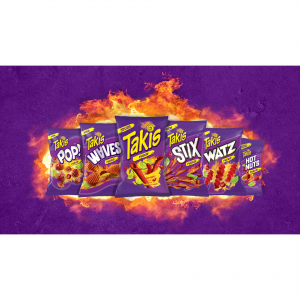
Asics vs. Brooks vs. New Balance vs. Saucony: Which Makes the Best Running Shoes?
When embarking on a running kick, the one piece of kit it’s really worth putting some time into selecting is a top-notch pair of running shoes.The right pair of shoes will help you find the motivation to get out there and pound the pavements.There are so many great running shoes out there, and sometimes it can take a little while to find the brand that’s best for you.In this article, we’re going to compare four well-known brands:Asics,Brooks,New Balance and Saucony.There's a shoe for you made by the four brand, they do offer distinct options and design.
Asics vs. Brooks vs. New Balance vs. Saucony:what's the difference?Which brand is best for you?Are Saucony and Brooks the same?Are Brooks and Asics the same?We’ll tell you everything you need to know about how they look and feel, as well as other considerations. Hopefully by the end, if you’ve been on the fence about these two brands, you’ll know which one is best for you.
Asics History
Asics was started by Kihachiro Onitsuka, as Onitsuka Co. Ltd. in 1949.Kihachiro Onitsuka began making basketball shoes in his living room in Kobe, Japan at that time. He soon expanded to running shoes, and his first pair, the Marathon Tabi, came out in 1953. His business grew, and in 1977, he merged it with two other companies and began selling footwear in the United States. He also changed the company’s name to Asics, an acronym for the Latin phrase “Anima Sana In Corpore Sano” (a sound mind in a sound body).
From there, Asics went on a tear during the 80’s and early 90’s with innovative “jogging shoes” from the Tarther to the Nevada to the Gel Saga. All of these shoes catered toward making the runner more comfortable through pronation support, stabilization, and shock absorption.
However, all these technological improvements truly came together when Asics released the Gel-Kayano trainer in 1993. Named after its designer and inspired by the protective exterior and horns of a beetle, the Asics Gel-Kayano married all the technological improvements Asics had made thus far.The Gel-Kayano was a massive hit with runners and it immediately elevated Asics as a serious running company.
Asics running shoes are known for their comfortable fit and support, making them a favorite among casual and distance runners alike.What’s more, Asics conducts rigorous product testing to ensure consistency and quality. In fact, the company’s research department is continually looking for new ways to improve the overall design of its shoes.
Two Best Asics Running Shoes
Price: $129.95
The Asics Gel Nimbus 23 is a stable, every day trainer with a squishy underfoot feel that shines during easy paces.Version 23 has been updated with a filled-in arch area and a sleeved tongue which gives it a smoother, more comfortable ride.
| Pros | Cons |
|
|
Price: $120
The ASICS GEL-Nimbus has been around for decades for a reason: It’s a reliable and durable high-cushioned running shoe. The newest version delivers the same great cushion that people have come to know and love from the Nimbus.
| Pros | Cons |
|
|
Brooks History
There are many brands specializing in running shoes these days, and one of the top brands on the market is Brooks.In 1914, John Brooks Goldenberg founded Brooks Sports, Inc. after he bought a manufacturer of bathing shoes and ballet slippers, the Quaker Shoe Company. The company was based out of Philadelphia, and it was run as a partnership between John Goldenberg and his two brothers, Michael and Frank.Currently, they may be known as a running shoe company, but actually started as a manufacturer of all types of athletic shoes, from bathing shoes to ice skates.
In the 1990s, after the company filed for bankruptcy in the early 1980s, Brooks was purchased by the Rokke Group, and they decided to focus solely on running shoes. They focused all of their efforts on creating running shoes outfitted with the latest technologies to ensure the comfort and support of runners' feet and improve their success overall. This is the Brooks we know today.
Between 2011 and 2017, they had become the best-selling manufacturer in the specialty running shoe industry. Brooks has also been dubbed the "Best Running Shoe" by notable athletic publishers, such as Sports Illustrated and Runner's World. They've also received recognition for their dedication and commitment to improving the environment with their sustainability programs and technological innovations.The company designs and manufactures a full range of running and fitness footwear and apparel, maintaining a global presence in the athletic market.Whether you're a novice runner looking for your first pair of sneakers or an avid runner who needs to replace your existing shoes, you may be considering Brooks.
Two Best Brooks Running Shoes
Price: $140
The Ghost 14 from Brooks really fits the bill as the shoe for all runners. It's a workhorse that's comfy enough for easy days, responsive for tempo sessions, and is heavy-duty to handle light trails. Overall, a no-fuss daily trainer that will work for all your runs!

| Pros | Cons |
|
|
Price: $150
The Brooks Glycerin 19 is a medium-soft, max-cushioned trainer with a superb, comfortable, plush upper that’s best suited to easy-paced runs.
Version 19 has been updated with a slightly softer ride and a new outsole configuration which results in smoother ride transitions but it still has that signature, polished Glycerin feel.

| Pros | Cons |
|
|
New Balance History
New Balance traces its origins back to 1906, when William Riley founded New Balance Arch Company in Boston and began selling arch supports for shoes. The company didn’t make its first pair of sneakers until 1938, but New Balance quickly earned a reputation for high quality. Its first breakthrough came with the release of the Trackster running shoe in 1960, which was designed to fit feet of different widths—a novel idea at the time. By 1976, New Balance’s 320 running sneaker became the number one shoe on the market, and cemented the company’s status as a global leader in running.
What also sets them apart is the wide range of shoe widths from A to E. The New Balance 990 is their hallmark shoe and was developed in 1982 for a balanced blend of stability, cushioning and flexibility. The 990 exemplifies the core philosophy of New Balance and continues to be a steadfast for the company.
It’s still a popular model today, and one of the main shoes in the company’s “Made in USA” series.
Two Best New Balance Running Shoes
1.New Balance Fresh Foam 860v12
Price: $134.99
The Fresh Foam 860v12 is one of the best New Balance running shoes because it gives reliable support and cushioning runners and walkers love.
Each step feels smooth and stable thanks to a firm and durable midsole post that helps curb any overpronation. The New Balance 860 also uses high-performance Fresh Foam for super soft landings and energetic takeoffs mile after mile.
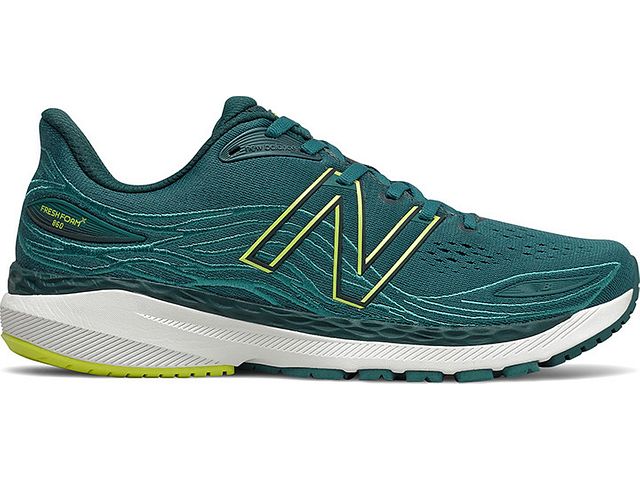
| Pros | Cons |
|
|
2.New Balance Fresh Foam 880v11
Price: $134.99
The 880 v11 is one of the best daily trainers that you can get from New Balance. Amazingly comfortable and well-cushioned, it will help you cover any distance up to a marathon. Straight from the box, you get an equally enjoyable experience in the upper and underfoot. And that's not to mention the beautiful aesthetics coming with it.

| Pros | Cons |
|
|
Saucony History
In 1898, two years after the first Olympic Marathon, four men, Donnoyer, Levan, Snyder, and Reider, founded Saucony in Kutztown, PA. Named after Saucony Creek, Saucony is derived from the Lenni Lenape Native American word for “saconk,” meaning where two rivers run together. As a result, the logo represents a running river marked by three boulders.
However, Saucony really entered the consumer running market in 1968 when Saucony was bought by Hyde Athletic Industries and moved its operations to Boston.Pouring its resources into developing running shoes, Saucony received the “best quality” award from Consumer Reports in 1977 and two years later, received national attention when Runner’s World selected two of its offerings in their annual top ten.
Similar to Asics, Saucony also went on a tear in the 1980’s developing innovative technologies and unique running shoes such as the Trainer 80, the Jazz, and the Shadow for mass consumption. These shoes featured flexible and natural foot movement, unique traction patterns, and Vertical Ionic Pillars, to assist with stability.Saucony has maintained a lot of organic buzz throughout its history with many of their successes because of word-of-mouth or magazine recognition. It’s now among the many shoe brands owned by Wolverine Worldwide.
Two Best Saucony Running Shoes
Price: $130
The Saucony Ride 14 is the best Saucony running shoes for everyday training because it delivers reliable performance day after day.
Saucony swapped out its ISOFIT system for its updated FORMFIT technology. The refreshed fit technology uses three layers of cushioning to adapt to your unique foot shape, weight and stride.
Fleet Feet runners loved the spacious forefoot fit and consistent cushioning provided by PWRRUN foam. Working together, the fit and foam make the Ride 14 comfortable for long runs.
| Pros | Cons |
|
|
Price: $130
The Saucony Guide 14 is a tried and true stability running shoe that delivers comfort mile after mile.A TPU guidance frame embedded in the PWRRUN foam midsole provides the stability and durability your foot needs if it pronates or supinates. This way, your shoes wear evenly and you stay comfortable longer.
| Pros | Cons |
|
|
Saving Tip:
If you like online shopping and buy running shoe online,don't forget to sign up at Extrabux.com!(What is Extrabux),then you can enjoy up to 30%+ cashback on your order from Extrabux! Sign-Up Bonus: Free to join it & get $20 welcome bonus!
Asics: 3% Super Cash Back
Brooks: 1.5% Super Cash Back
New Balance: 4% Super Cash Back
Saucony: 8% Super Cash Back
Asics vs. Brooks vs. New Balance vs. Saucony Feature Comparison
1.Durability
The lifespan of shoes from the four companies is fairly comparable.
Asics shoes have a life expectancy ranging from 450 to 500 miles,depending on your monthly mileage.
Brooks makes a very durable shoe. They will almost always hold up to your typical 300-500 miles, depending on what surfaces you’re running on as well as how hard you run.
New Balance shoe also built to last 350 to 500 miles.
Saucony also makes very durable shoes since they have rubber on the outsole. Typically, Saucony notes that their shoes last for around 400 miles.
Determining when to replace running shoes, of course, all depends on your gait, weight, and whether you run mostly on trail or road.
2.Breathability
Asics Ortholite Lasting material provides a plush underfoot cushion while managing moisture build up from sweat, allowing for maximum breathability.
Brooks uses two different technologies to maximize breathability. The first is their Engineered Mesh, a woven material that provides stretch and structure. The second is the Fit Knit that provides a sock-like fit that also allows for comfortable movement.
New Balance shoes will keep your feet cool and dry with a lightweight, breathable mesh upper.
Saucony Breathable Technology:The materials in this product are designed to move moisture away from the skin, to keep you running dry and comfortable.Breathing is good, whether you’re a human or a piece of running gear.
3.Shoe Construction
Upper
Brooks has really focused on increased flexibility and weight reduction when it comes to their uppers. Most of the materials are stretchy and conform to your feet well, but are still durable.
Asics'smost running shoes use a synthetic mesh fabric, although sometimes fabric, knit, leather and plastics are incorporated.The upper of a running shoe uses a collection of technologies to offer a lightweight, breathable and supportive structure to keep your foot in place
New Balance is known for its breathable uppers as well as plenty of flexibility in the forefoot. Many shoes have a knitted upper, so it will feel like you’re wearing a sock rather than a shoe. Some people find New Balance shoes softer than other brands.
Saucony’s new overlay tech is FlexFILM.This is melded to the upper. It helps everything weigh less and makes it less likely that you’ll deal with irritations like blisters.For some models, Saucony has introduced a new upper construction called FORMFIT. It’s a combination of seamless upper and FlexFILM that offers a unique fit to cradle your foot.
Midsole
Brooks midsoles are designed for comfort and durability, and you can easily find lots of cushioning in many models. Based on the type of running experience you want, Brooks caters to you in different ways with their midsole technology. If you get Brooks’s DNA Amp midsole, you’ll get significantly more energy return than other running shoes on the market. Some estimates are 10-20% more. This means that you’ll experience great responsiveness with Brooks shoes.
Asics uses small pockets of gel in the forefoot and heel of the midsole in most of their shoes to reduce heel strike and create a smooth transition. Asics Flytefoam is similar to Brooks’ DNA Amp midsole, but gives a little less energy return, at about 60-65%, which is still excellent. For the same effect with less weight, Asics shoes with Flytefoam light are about half the industry weight standard but still provide a long foam life. SpEVA is also a more responsive version of EVA, giving you a higher energy return with each step.
New Balance shoes use Absorb technology to provide bounce and stability. It was designed in conjunction with Dupont and lasts longer than EVA. New Balance uses its Rollbar technology to provide more stability to the heel of the midsole for people who excessively pronate.
Saucony is starting to incorporate a new technology called PWRRUN+ in their latest models, which is an additional layer of cushioning that is closer to your foot, making it more comfortable, especially for long runs.This cushioning is supposed to give you better energy return and is designed to avoid breaking down with usage. Therefore, you should experience the same amount of extra cushioning whether you’re on mile 5 or mile 500.
Saucony also uses Powergrid+ technology, a grid of holes on the midsole designed to help spread the impact when you land over a wider surface.Saucony also uses Powergrid+ technology, a grid of holes on the midsole designed to help spread the impact when you land over a wider surface.
Outsole
Brooks shoes tend to have a completely pure rubber outsole. They also have ballistic rock shields and TrailTak rubber outsoles for their trail shoes so that you aren’t hit by any flying rocks and you get the traction you need on wet and dry surfaces.
For running off-road, Brooks’ trail models include a ballistic rock shield placed between the midsole and outsole which protects feet from sharp objects. The TrailTrack rubber provides more traction for running up and downhill.
Asics also has rubber-based outsoles.Asics splits the rearfoot and forefoot outsole with a Trusstic system. This gives their shoes additional stability by preventing twisting, and is tailored to the purpose of the shoe. Asics split outsoles are made of AHAR or AHAR+, which increases durability and provides great traction.
New Balance also uses rubber outsoles on their shoes. The outsole forefoot is made from split blown rubber, which helps with comfort. It also helps make the outsoles feel softer.
Saucony outsoles are known for being very lightweight. They often feature XT-900 carbon rubber compound in the heel to help provide traction on a variety of different surfaces. Durability is improved, as well.
4.Cushioning
Brooks uses two types of cushioning in their designs:
DNA LOFT – Soft cushioning, that adapts to a runner’s profile, stride, and speed
BioMoGo DNA – also adapts to runner’s profile, stride, and speed, providing a more balanced experience with a bit of spring.
Asics uses Flytefoam technology that provides bounceback and responsiveness with each step. It gives a bit less energy return than Brooks shoes, but the two technologies are fairly similar.The company has been using their famous Gel technology for more than 30 years. It works well to absorb the shock with each step.
New Balance offers a comfortable combination of bounce and softness. The Fresh Foam will give you a really solid energy return for a daily trainer and it is pretty lightweight so that will give you a nice option if you’re a runner who enjoyed something a little less cumbersome on your legs.
Saucony also has cushioning that will hold up for a long time and not break down. They place their cushioning close to the bottom of the foot, so you should feel it more. Their two most cushioned shoes are the Hurricane and Triumph.
5.Fit
When it comes to picking out a daily trainer, for most comfort can be the most important feature. If you are going to spend a lot of time in these shoes then they should very well be comfortable on and round your feet!
Brooks shoes have a wider toe box, which makes them a great choice for runners with wide feet or bunions. The brand recommends that buyers go up a half size from their everyday shoe.
Asics shoes have a more snug fit, particularly in the heel and midfoot. An external heel clutch delivers targeted fit and support, while the Gel technology allows for foot movement in various directions as the foot transitions, reducing heel strike.
New Balance shoes also have a wider toe box.If you need a larger toe box, both Brooks and New Balance are good options because their shoes typically run a little bit wider.
Saucony and Brooks are going to have a similar fit and comfort level. The only difference is that Brooks is known for having a larger toe box, while Saucony shoes offer a snugger, more responsive fit.If you like your feet locked in tight, go with Saucony.
6.Pricing
Brooks shoes are known for lasting a while, so you should be able to get a lot of miles out of them.The average price for a pair of Brooks is around $120. Not the cheapest on the market, nor the most expensive. If you get 500 miles in them, that’s about 25 cents a mile, which isn’t bad.
Asics and Brooks are priced similarly, but there are many more ASICS that are below the $100 price point.
Saucony running shoes' average price is just under $110. If you get 400 miles in them like the company suggests, that’s just over 25 cents a mile.
New Balance shoes average price is around $125.
If you do go cheaper, pay attention to which features the shoe does not have, so you can decide what you really want.
Which Brand is Best for You?
You can’t beat Brooks’s reliability and the fact that they are used by so many walkers and runners. Once people start wearing Brooks, they tend to keep wearing them. But the another three brand also have shoes that will appeal to any type of individual, so you are sure to find a shoe that works for you!It all comes down to personal preference. The the fit of the shoe is more important than brand.Keep in mind that shoe design can change, even with the same model, so always assess how the shoe fits every time you replace a pair.
At the end of the day, you’ll have to figure out what’s best for you. Go to a running store and try on a couple pairs and see what you like. You may also want to ask your running friends what they wear and see if that works for you.
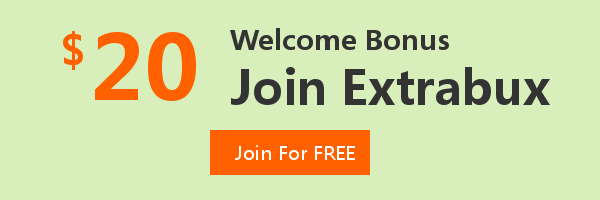
Extrabux is an international cashback shopping site, offering up to 30% cashback from 10,000+ Stores!
24S, SSENSE, MATCHESFASHION.COM, Shopbop, NET-A-PORTER, FARFETCH, YOOX, Eastbay, End Clothing, Macys, Neiman Marcus, Saks Fifth Avenue, Saks OFF 5TH, Bergdorf Goodman, Selfridges, Bloomingdales, Coggles, Harrods, Kohl's, Urban Outfitters, ASOS, Missguided, etc.
Join to get $20 welcome bonus now! (How does Welcome Bonus work?)
Recommendation
-
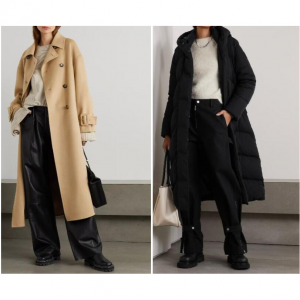
10 Best & Stylish Winter Coats for Women on NET-A-PORTER in 2024
-

Top & Best 12 Sneaker Apps/Websites for Raffles, Releases & Restocks in 2024
-

7 Best Gift Card Exchange Sites - Buy, Sell and Trade Discount Gift Card Safely and Instanly!
-

Top 9 Professional Skincare Brands for Licensed Estheticians 2024
-

13 Best Luxury Online Shopping Sites with Highest Cashback in 2024 (Coupon Code+Sale+14% Cashback)
Up to 14% Cashback!

